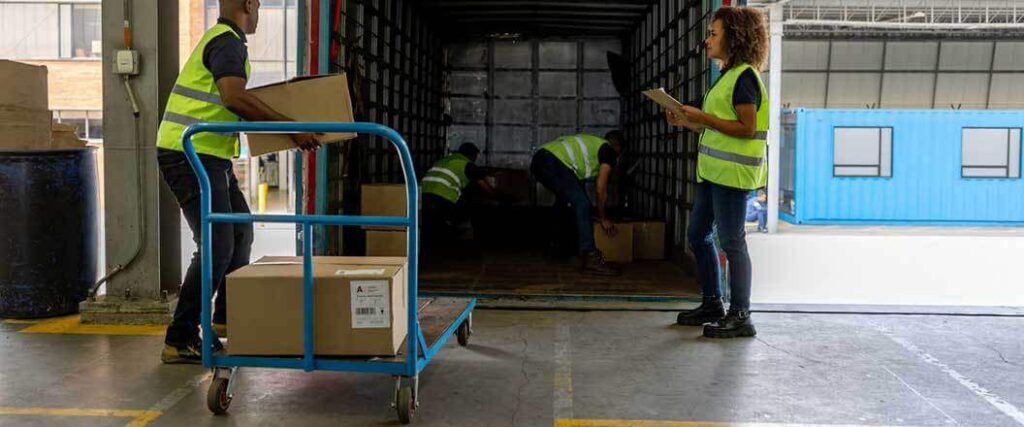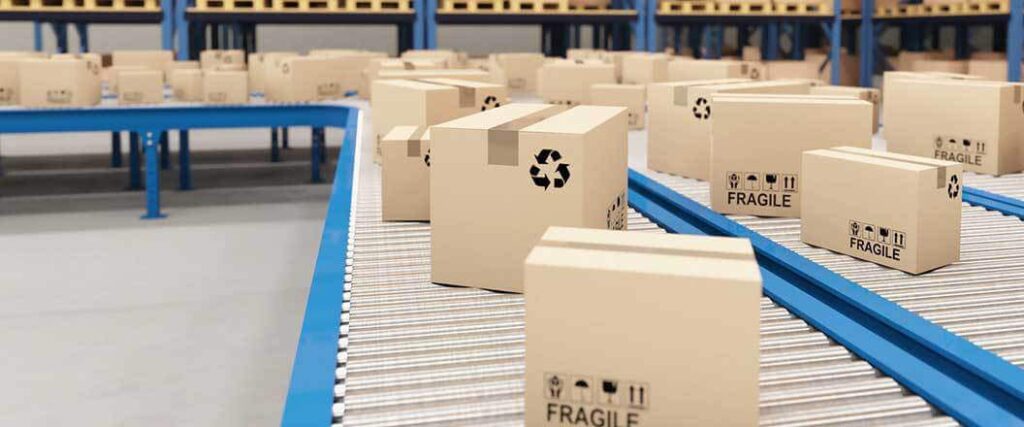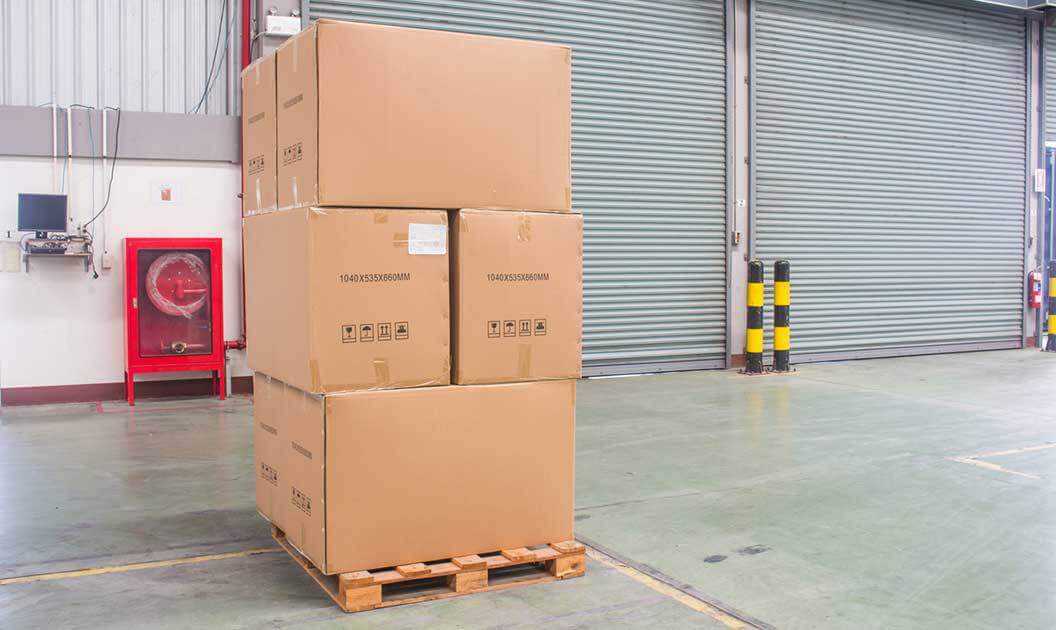Retail cross docking is a logistics process that reduces the need for traditional warehousing by keeping shipments in almost constant transit. This process can improve shipping efficiency and keep storage costs down. However, without expert help, challenges can prevent businesses from realizing its benefits.
The International Warehouse Logistics Association (IWLA) recognizes retail cross docking as a logistical strategy that bypasses warehousing. Items from a supplier or manufacturer are sent directly to a retailer without warehousing. The benefits of this practice include:
- Less material handling
- Lower storage costs
- Efficient supply chain management
In this article, we’ll explore the definition and practice of retail cross docking. We’ll examine the benefits and advantages of this process, and show you how Transload Services USA can power up your logistics.
What Is Retail Cross Docking?

Cross docking is the direct transfer of products from incoming transportation to outbound shipments, without storage in between. When we zero in on the retail sector, what exactly is retail cross docking?
Retail cross docking is a streamlined process where goods from a supplier or manufacturer are dispatched straight to a retail outlet, bypassing long-term storage.
Cross docking in retail usually takes one of two forms:
- Gathering several shipments into a single FTL or LTL shipment bound for a retail destination. This is sometimes called a consolidation arrangement.
- Breaking a large shipment down for smaller trucks to deliver to multiple retail locations.
To better understand how this works, we can contrast the process with other types of cross docking.
What is Cross Docking in Retail?
Retail cross docking differs from other versions of this shipping strategy.
Other logistics sectors would include:
- Manufacturing: Used by manufacturers to hasten assembly.
- Distribution: Utilized in last-mile logistics to send products to end users (customers).
While all of these processes bypass warehousing, retail cross docking differs by serving retail locations rather than end users or suppliers.
Another practice that is sometimes confused with cross docking is transloading. Where a cross docking operation keeps cargo flowing directly from one mode of transportation to another, transloading usually involves some short-term storage.
What do these strategies all have in common? Each of them involves cargo being unloaded, sorted, and dispatched with little to no storage time.

Pre-Distribution and Post-Distribution Cross Docking: Key Differences
There are further nuances to cross docking, which are based on when product sorting takes place in supply chains. These two types are pre-distribution and post-distribution.
Let’s take a look at the definitions for each of these terms, as well as some scenarios where they might play out.
Pre-Distribution Cross Docking Process
This involves sending products directly from the supplier to the distribution center and then to the retailer with no repackaging. The goal here is for products to spend as little time as possible at a docking station.
Example Scenario:
- A supplier produces limited edition sneakers, which are expected to sell quickly.
- The sneakers are packed and dispatched immediately after production.
- They arrive at the cross docking facility, where they’re immediately moved onto outbound transportation.
- Retailers who've placed orders get the sneakers dispatched to them directly.
- End consumers flock to the retail outlets to grab their pair, resulting in rapid sales.
Let’s take a look at how a post-distribution strategy differs.
Post-Distribution Cross Docking Process
In this model, products still go to a central distribution center first, but they are sorted before going to final destinations. The shipments are then dispatched to various retail outlets.
Example Scenario:
- A brand launches a new line of summer clothing with different designs, colors, and sizes.
- The entire clothing line is sent to a cross docking warehouse.
- Once the clothing arrives, it’s sorted according to demand forecasts. For instance, beach towns might get more of the breezy, light-colored designs, while urban centers might receive a mix.
- The sorted products are then dispatched to respective retail stores based on the forecasted demand for each location.
- Retailers receive inventory that's tailored to their specific customer base, ensuring they don't overstock or run out of popular items.
These two forms of cross docking are both designed to improve efficiency for inbound and outbound shipments. By anticipating demand with data-driven insights, inventory management becomes far easier.
What Are 2 Advantages of Retail Cross Docking?

The two main benefits of retail cross docking are improved delivery speeds and reduced storage costs. How is this accomplished? Let’s take a more in-depth look at both advantages.
Benefits of Cross Docking for Retailers: Delivery Speeds
Meeting customer demands for availability is one of the hardest parts of running a successful business. Retail cross docking is a key component of satisfying those demands.
By eliminating unnecessary storage and handling, products reach stores faster and your customers won’t have to visit a competitor to get what they need.
Less inventory handling also reduces the chance of damaged merchandise. Retail giants like Walmart have harnessed this method to reduce shrink, or loss of goods stemming from damage. This ensures shelves are never empty, which leads to improved customer satisfaction.
Reducing Storage Costs and Warehousing
Warehouse expenses can be a drain on a retailer's resources. Think about the money spent on long-term storage, security, and even labor costs.
With retail cross docking, businesses slash expensive storage costs associated with traditional warehousing. Storing inventory cuts into overall profitability, and a good cross docking strategy keeps those costs under control.
Speaking of warehouses, consider these cost and availability statistics for storing goods from 2022.
Warehouse Cost and Availability Statistics
| Average Warehouse Cost per Square Foot | $7.11 |
| Average Availability of Warehouse Space | Less than 4 percent |
| Average Warehouse Age in the U.S. | 42 years |
Source: freightwaves.com
Why should warehouse age matter? Because out-of-date technology makes the picking and packing stage in these warehouses highly time-consuming. Cross docking bypasses the majority of pick and pack, energizing your fulfillment process.
Why Choose Transload Services USA for Retail Cross Docking?
Retail cross docking, backed by technological advancements, is revolutionizing the logistics sector. It's not just about moving goods, but doing so with an eye toward reducing costs and meeting customer demands.
With assistance from the experts at Transload Services USA, you're not just adapting to the future; you're leading it.
Partner with us and enjoy:
- Strategically located cross docking facilities
- Speedy freight consolidation
- A nationwide network of transload facilities
- And more
Give us a call at (352) 282-4588 or request a risk-free quote online and put the pedal to the metal with your shipping and receiving process.

